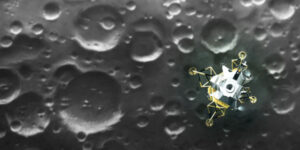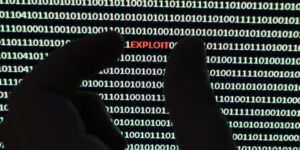A number of statements from US officials over the past three months have been raising ominous warnings about a Russian plan to put an alarming new weapon into space. As a Department of Defense spokesperson put it to Vox directly in a conversation last week, “The United States assesses that Russia is developing a new satellite carrying a nuclear device.”
May 22, 2024:
If there’s any good news in this scenario, it’s that such a device would not be intended to kill people on the ground, but to destroy satellites in orbit.
Don’t get too relaxed, though: The Pentagon spokesperson stressed that a nuclear detonation in space would be “catastrophic” and “pose a threat to the thousands of satellites operated by countries and companies around the globe, as well as to the vital communications, scientific, meteorological, agricultural, commercial, and national security services we all depend upon.” It would also mark a major step toward the militarization of space and potentially a new and even more dangerous era of nuclear brinkmanship.
Still, much remains unclear about what exactly this device is, how close it is to being deployed, and what the Russian government’s plans are for it — if indeed they actually have any. Since the intentional release of what turned out to be remarkably accurate intelligence assessments in the lead-up to the invasion of Ukraine in 2022, the current US government has earned itself credibility when it comes to predicting Russia’s military moves. But in this case, each new revelation about the weapon seems to raise as many questions as it answers.
That confusion may help explain why the Biden administration didn’t seem to want to talk publicly about a Russian space nuke at all.
It first became a news story on February 14 when Rep. Mike Turner (R-OH) posted a cryptic statement on Twitter saying that the House Intelligence Committee, which he chairs, had become aware of a “serious national security threat” and calling on President Biden to declassify all information about it.
Media reports that same day suggested that the tweet had been referring to a space-based nuclear weapon that Russia was developing — a weapon that could violate the 1967 Outer Space Treaty, which prohibits placing nuclear weapons in space. The following day, National Security Council spokesperson John Kirby confirmed that the threat was “related to an anti-satellite capability that Russia is developing.”
On February 20, Russian President Vladimir Putin denied the reports, saying “We have always been categorically against and are now against the deployment of nuclear weapons in space.”
The US then upped the diplomatic ante by drafting, along with Japan, a UN resolution that reaffirmed the Outer Space Treaty’s prohibition on nuclear weapons in space and also called on states not to develop such weapons. When the resolution came up for a vote on April 25, it was vetoed by Russia. (China, which often backs Russia on the council, abstained.)
This prompted a statement from National Security Adviser Jake Sullivan arguing that the veto bolstered the American assessment that “Russia is developing a new satellite carrying a nuclear device.” After all, Sullivan reasoned, if it were not, “Russia would not have vetoed this resolution.”
On May 1, appearing before Mike Turner’s House committee, Assistant Defense Secretary for Space Policy John Plumb testified about the threat and said under questioning that a nuclear detonation “in the right location could render low-Earth orbit, for example, unusable for some period of time” — months, or even up to a year. (“Low-Earth orbit” refers to the part of space 1,200 miles or less from the surface of the Earth. Most of the reports suggest this is the area targeted by this weapon.)
On May 3, the administration made its most detailed statement about the threat so far in an appearance by Assistant Secretary of State for Arms Control Mallory Stewart at the Center for Strategic and International Studies (CSIS), a think tank in Washington. In her remarks, Stewart described the weapon as “not an active capability that has already been deployed” — clarifying that there is not currently a Russian nuclear warhead orbiting the Earth.
But she also referred to a specific satellite that Russia has claimed is for scientific purposes but which is currently orbiting “in a region not used by any other spacecraft.”
This strongly implies that something the US is concerned about is already in orbit. Based on publicly available information and statements, analysts on social media quickly identified the satellite in question as Cosmos-2553. It was launched in 2022 — just a few weeks prior to the invasion of Ukraine — with the stated mission of testing the effect of radiation exposure on its onboard components.
In her remarks, Stewart described the satellite as being in a “region of higher radiation than normal lower-Earth orbits, but not high enough of a radiation environment to allow accelerated testing of electronics, as Russia has described the purpose to be.” In other words, if this satellite was truly meant to study the effects of radiation on electronics, as Moscow said, it wasn’t where it was supposed to be.
More recently, US officials have confirmed to the Wall Street Journal that the satellite Stewart referred to is, indeed, Cosmos-2553, which they say “has been secretly operating as a research and development platform for nonnuclear components of the new weapon system, which Russia has yet to deploy.”
An open-and-shut case? Not quite. But more proof could be coming.
“If this is the only evidence they have, it is pretty weak,” said Pavel Podvig, an expert on Russia’s nuclear forces at the United Nations Institute for Disarmament Research, who was one of the first to identify the satellite in question. The only material evidence the US has so far presented is the presence of one particular Russian satellite in an unusual orbit. “But my guess is that they may have something more.”
We can only know so much about what effect a nuclear blast would have in orbit because, as David Burbach, a professor at the US Naval War College and space security expert put it, “Thankfully, there haven’t been a whole lot of nuclear tests in space.”
The best information we do have comes from a test conducted by the United States more than 60 years ago.
On July 9, 1962, the US detonated a 1.45 megaton hydrogen bomb – more than 100 times as powerful as the Hiroshima bomb – 250 miles above Johnston Atoll in the Pacific Ocean, in order to study the effects of a nuclear blast on the high atmosphere. This particular test, known as Starfish Prime, was powerful enough to create artificial aurora borealis effects across the Pacific and generated an electromagnetic pulse that knocked out streetlights and telephone service in Hawaii, more than 1,000 miles away.
Starfish Prime’s more lasting effect was the release of massive amounts of radiation. The Earth is normally encircled by the Van Allen belts: two regions of high radiation. Satellites are usually placed in orbits that avoid these belts, which can cause electronic systems to rapidly decay. (Studying these radiation effects is the officially stated purpose of Cosmos-2553.)
Starfish Prime created a new artificial belt of radiation in low-Earth orbit and also increased the intensity of the existing Van Allen belts. This is believed to have led to the premature loss of 9 of the 25 satellites in orbit at the time. Seven of those destroyed were American. The blast’s most famous victim was Telstar, the world’s first telecommunications satellite, developed by AT&T and launched just a day after the test. Telstar’s transistors failed due to radiation the following year, though it continues to orbit the Earth.
Starfish Prime was one of a number of high-altitude nuclear tests conducted by the US and Soviet Union during this era, most with less dramatic impacts. These came to an end with the signing of the Nuclear Test Ban Treaty in 1963, which prohibited nuclear blasts in the atmosphere, space, or underwater. (All nuclear tests from this point on were carried out underground.) The Outer Space Treaty in 1967 then banned countries from deploying “nuclear weapons or any other kinds of weapons of mass destruction” in space.
These treaties have been remarkably effective, but Jessica West, a senior researcher on the militarization of space at Project Ploughshares, a Canadian arms control group, says the latest reports are a sign it may be time to revisit them. “We’ve ignored the Outer Space Treaty for a long time and taken its restrictions for granted,” she told Vox. “It’s quite clear that we have to put in the diplomatic labor to make this treaty continue to succeed in the way it has for the last few decades.”
Unfortunately, at precisely the moment when the nuclear standoff is extending all the way to the heavens, Cold War-era arms control treaties of all types are falling by the wayside.
Low-Earth orbit today is a lot more crowded than it was in 1962, the year of Starfish Prime, and the impact of such an explosion would be far more severe. According to the Wall Street Journal, there are more than 6,700 American satellites in this part of space. China has 780 and Russia has 149.
Many of the American satellites are part of the Starlink network, operated by Elon Musk’s SpaceX, which provides broadband internet in dozens of countries around the world. Starlink connectivity has also been vital for Ukraine’s war effort, a fact Putin has surely taken note of.
Low-Earth orbit is also where the US Space Force’s Space Development Agency (SDA) is planning to deploy a constellation of hundreds of satellites in the coming years known as the Transport Layer. This fleet of spacecraft will provide data and connectivity to military systems on the ground. It is part of a larger push by the United States military and its recently established Space Force branch to extend America’s overwhelming dominance on land, sea, and air into orbit. But in late February, the SDA’s director said it was not planning on making its satellites resilient to a “Black Swan” event like a nuclear detonation in space.
Beyond military spacecraft, many vital weather and environmental monitoring satellites are in low-Earth orbit, as is NASA’s Hubble Space Telescope. The International Space Station is also in low-Earth orbit; in the event of a nuclear detonation, it could potentially have to be evacuated to avoid astronauts being exposed to dangerous amounts of radiation. (The astronauts on the moon missions didn’t spend enough time in the Van Allen belts for it to pose a danger, though this “hot band of peril” was a concern in the early space age.)
The satellites used for GPS navigation are typically at higher altitudes than low-Earth orbit, though it’s not out of the question that nuclear radiation could interfere with their ground communication. (In April, Finnair paused some of its flights due to GPS interference the Finnish government blamed on Russia.)
What about the effects on the ground of a nuclear detonation far above? US officials have repeatedly stressed that the direct danger is minimal. As Mallory Stewart put it in her CSIS presentation, “We aren’t talking about a weapon that can be used to attack humans or cause structural damage on Earth.”
That doesn’t mean it wouldn’t cause any damage, particularly to electronic systems. Starfish Prime, after all, knocked out power in Hawaii, and the world is far more wired and more dependent on electronics than it was in the early 1960s. This month’s solar storms played havoc with some systems, including the GPS devices used by many farmers. Some US politicians, notably former House Speaker Newt Gingrich, have spent years warning that an electromagnetic pulse (EMP) attack from a nuclear detonation could cripple the country’s infrastructure.
It’s important to remember that the impact of a nuclear-caused EMP would still pale in comparison to an actual nuclear explosion on the ground, which could easily kill hundreds of thousands of people if detonated in a major city. “It’s not gonna be like The Day After or anything like that,” said Victoria Samson, director of the Secure World Foundation’s Washington office, “but there could be EMP consequences for people on the ground.”
For now, US efforts to respond to this perceived threat have been mainly focused on diplomacy, including the recent standoff at the UN. “The president has directed a series of actions to respond to this Russian activity, including direct engagement with Russia and with countries around the world,” the Pentagon spokesperson told Vox.
Beyond that, it’s not clear what the options would be should Russia deploy a nuclear device in orbit. It’s worth noting that the US banned testing of anti-satellite missiles in 2022, citing the dangerous space debris caused by previous tests by countries including the US, Russia, and China. It’s also possible that both militaries and commercial satellite companies may have to consider hardening their spacecraft against radiation going forward.
Almost as mysterious as what the space nuke would do is why the Russians would want it. “Every official public statement seems to raise more questions,” said Clayton Swope, deputy director of the Aerospace Security Project at CSIS.
First of all, why would the Russians put a nuclear bomb on an orbiting satellite — with all the attention such a move would generate — when they could get the same effect by simply launching one into space on a missile, as the US and Soviets both did in their tests in the 1960s? “Putin could hit that button tomorrow,” Swope said.
The Naval War College’s Burbach, speaking in his own capacity and not as a representative of the US military, suspected that “either they want real surprise, like even 15 minutes notice is still too much, or they want to detonate somewhere other than right over Russia.”
It’s also possible that Putin, who has made continual public references to his country’s massive nuclear arsenal during the war in Ukraine, might value the political impact of having an orbiting weapon as a looming threat, literally circling over his adversaries’ heads.
Still, should Putin decide to make good on such a threat, the result would be almost as catastrophic for Russia and its allies as it would be for its enemies. (Several analysts who spoke with Vox used the phrase “salt the Earth.”)
Russia has dozens of its own satellites in low-earth orbit as well as several cosmonauts on board the ISS, all of which could be imperiled. But, says Swope, Russia’s military and commercial presence in space has been declining in recent years, relative to the United States, which could play a part in Putin’s calculations. “They might easily say the US has far more to lose than we do so we’ll take that one advantage away,” he adds. (As Plumb notes, the last time the US military had to fight without the aid of satellites was the Korean War.)
A bigger concern for the Kremlin may be how its all-important ally China feels about it. Chinese support has become absolutely vital to Russia’s military efforts in Ukraine and the country’s economic survival. China is a growing space power and probably would not take kindly to a large chunk of its satellite fleet being disabled. Neither would other emerging space powers like India, a country that has so far avoided joining the West in sanctioning Russia.
For all these reasons, detonating a space nuke in what would represent the first aggressive use of a nuclear explosion since Nagasaki would be “incredibly escalatory,” said Samson. She said she saw it as an “end of regime” scenario for a truly desperate and threatened Russian government, rather than a means to gain leverage on the battlefield or in international negotiations.
Of course, given that Putin still denies Russia is developing this weapon at all, we can only know so much about his intentions for it. If this really is a weapon in development and not a research satellite, the unfortunate fact is that we may not learn exactly what it’s for until it’s already operational.

























